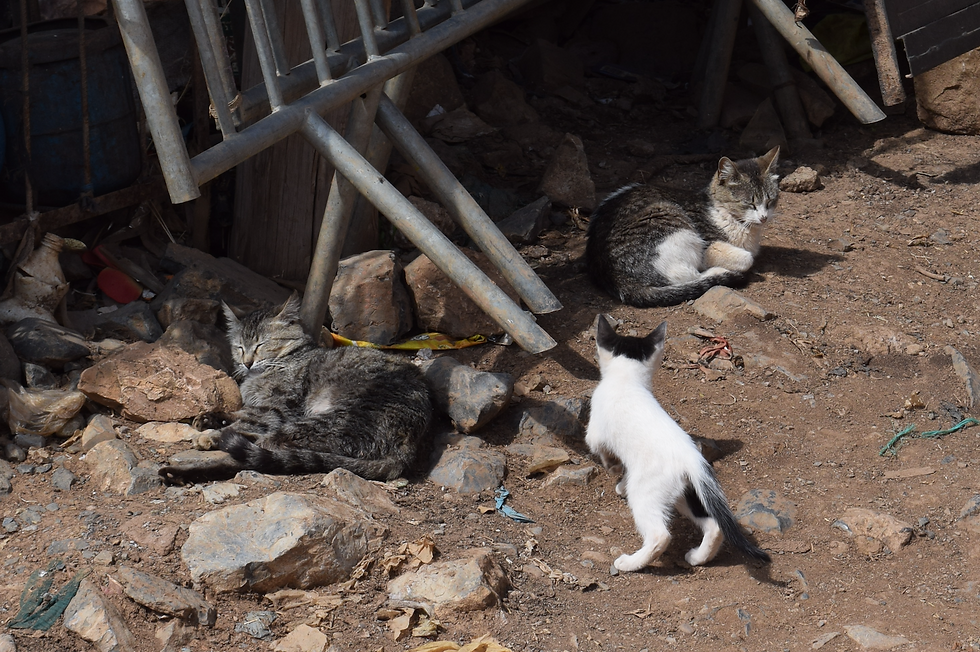Pets and broken frames
- Elspeth
- May 25, 2018
- 2 min read
Updated: Apr 4, 2019
Ait M'hamed Day 16

There was a death in Abdellatif’s family so I worked solo today. But hiking and doing plant surveys alone on sunny days with beautiful mountain views is nothing to complain about. I hiked above to hill fields on the far side of the river, had an amazing view of the douar and surrounding lands since it is the highest hill nearby and there were few clouds and obscuring pollution. There are so many wildflowers in bloom in the field- just sat for a while taking in all the colours and myriad of buzzing bugs some enormous by the river. I managed to finish the quadrat surveys with my frame and on the hike back it proceeded to fall apart, at least the timing was appropriate. Finally managed to hike to the top of the hill behind Malika’s house without being accosted by dogs.

Something that struck me today was how remarkable it is to see families of domesticated animals. Whether for food, work, or companion pets, the systems to produce commodify and control them in most of the world separate families of animals, especially mothers and children. Here cats and dogs are semi-feral live with/near people and are sometimes guards, but they are not sterilized, nor treated as pets in the way I have experienced them in the west. Although with certain types of animals they are usually separated from their mothers at some point but not as young. They are also less friendly and more afraid of people, but rely on humans for much of their food, which is either left out for them by household or butchers, or is scavenged from garbage heaps. But it is amazing to see whole families of animals living together. In the case of dogs here it is very problematic since they attack people and make areas unsafe. But some protect the sheep and goats from being stolen, but are quite herding more guards. Sheep, goats, and cows tend to stay with their mothers for a period (longer than most industrial and western farming), before being sold for income to others to rear or eat. But for the most part cows, donkeys, mules (yes I know they are sterile), and horses, both here and in Imegdale- are alone. Very interesting to watch animal family dynamics or lack thereof.

After Iftar I showed Fatima some of the touga plant pictures I have been able to name with help from shepherds interviewees and Touda. She was helpful in confirming names, despite not having sheep or interacting with many of them in her daily life like those who have animals.
Something that has been an interesting difference living here compared to the west is how you have to get used to being in the dark a lot. Electricity is expensive for people here and there are not numerous light fixtures likely because even though some houses are new- having electrical lighting is more recent in their cultural history. Also the style of architecture both old and new does emphasize much natural lighting as windows and the rare skylight are small and few. But it does really make one realise how much energy we use for lighting all the time, and how much building design contributes the light and feel of built spaces.






Comments